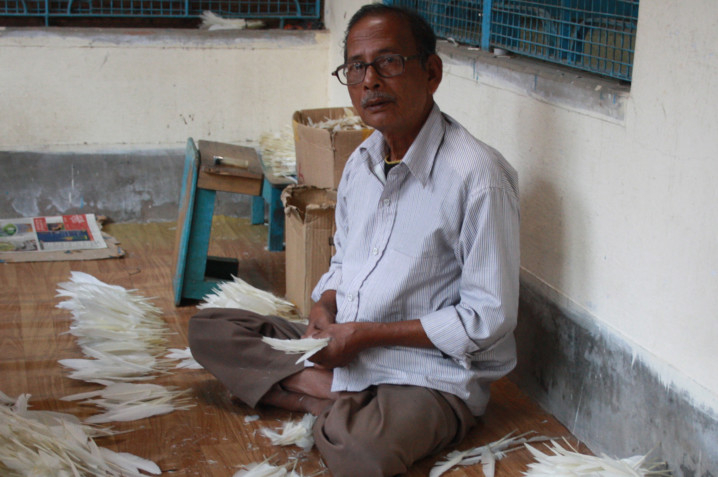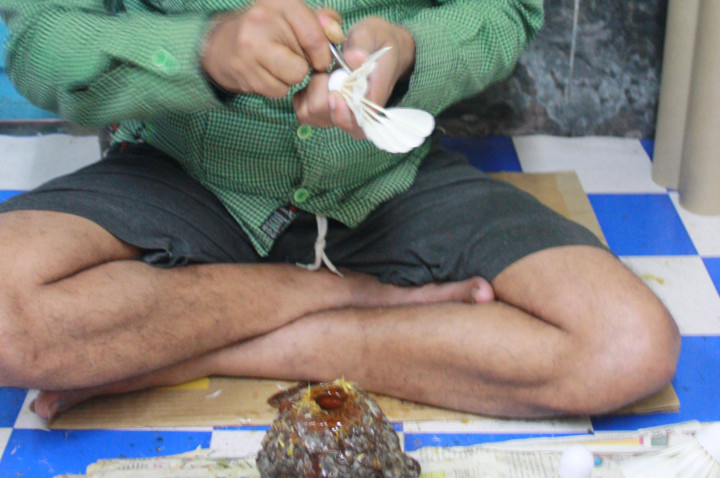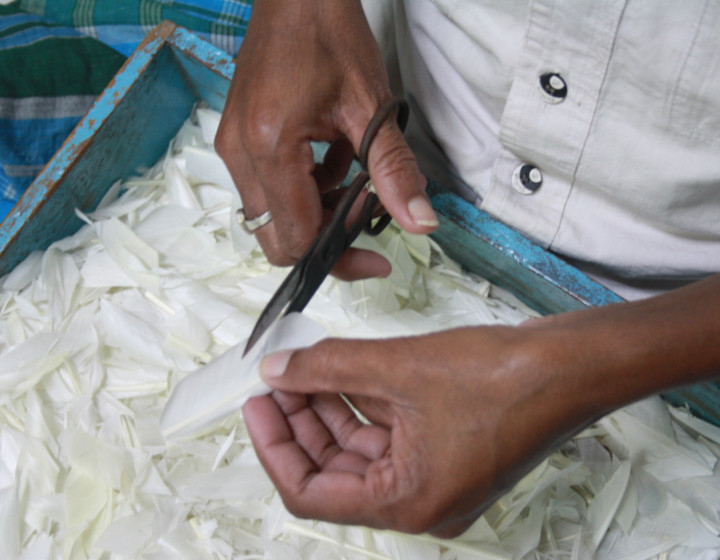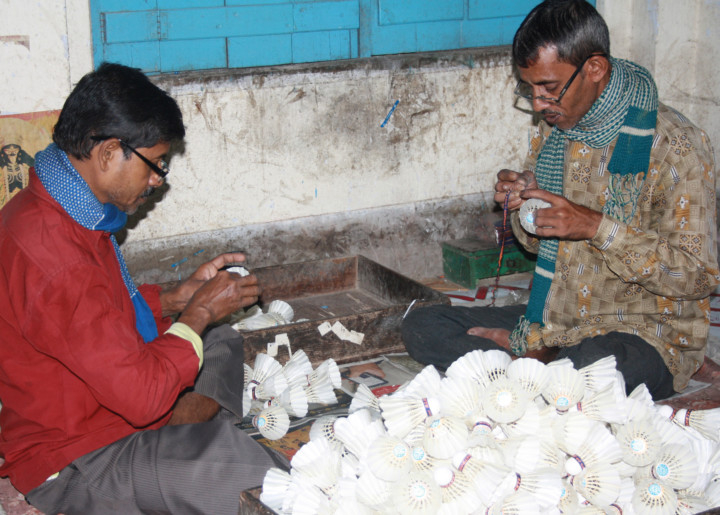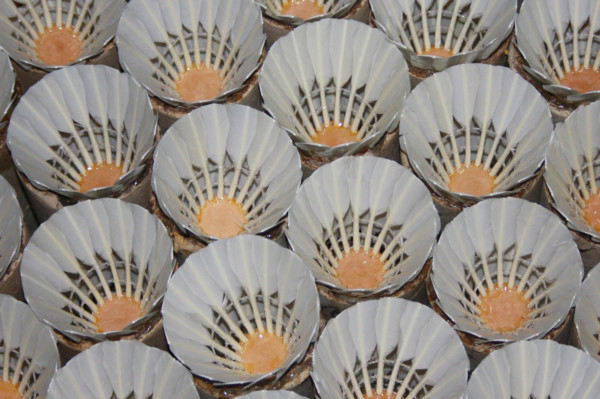
New Delhi: Badminton remains a popular sport in India, but not many are aware that Jadurberia village in Howrah district, West Bengal, has been the hub of shuttlecock production for generations.
Across the Hooghly River, about 40 kilometres from Kolkata, on the outskirts of Uluberia town, more than 5,000 people are employed in about 60-70 small and big units that produce more than 800 barrels of shuttlecocks every day.
But unlike several other handmade products, shuttlecocks, also referred to as ‘birds’, do not hold much value in the eyes of the buyers. This is visible in the living standards of the villagers, who are paid a meagre amount for their work.
Hard, 52, a fourth-generation worker says, “It is a very challenging job, but our craft is not recognised for its artistry. We hear about handmade saris and shawls that fetch a huge amount, but our work faces discrimination.”
Creating a shuttlecock is a painstaking process. The bird is made of 16 overlapping duck or goose feathers of identical length. The feathers are washed several times in detergent and sun-dried for hours. These are then trimmed to nine centimetres in length and rounded with sharp scissors.
Each feather must be exactly the right size, or it is discarded.
The feathers are glued and bound together with a string and tucked into a rounded cork base. A machine is used to drill 16 holes into each cork and the feathers are fixed by hand into these holes. Then, a sticker with a brand name is glued onto the base. Ten shuttlecocks are then packed in each cylindrical box, called a roll or a barrel.
Sankar, whose work is restricted to readying the corks explains, “A shuttlecock is made such that whichever way it flies, it is in the cork-first orientation. A cork is made from the bark of the cork tree. And a complete bird weighs between 4.74gm and 5.5gm. Bouncing off rackets at great speeds and still surviving for hours, it naturally has to be made strong.”
The barrels are sent to states including Maharashtra, Kerala, Tamil Nadu and Karnataka.
Uluberia producers import the feathers from Bangladesh and the cork from Spain and Portugal, through traders in Punjab. Currently, about 15 specialised companies operate from Jadurberia, the most renowned being D.B. Pandit and S. Niyogi.
The village’s association with shuttlecocks goes back to the 1920s, when a man named Ganendranath Bose began teaching the villagers the craft of making them. He had learnt the art from traders who supplied shuttlecocks to clubs in Kolkata, where British officials played the game.
Though some villagers learnt under his tutelage, only Dhananjoy Pandit, an illiterate villager, actually furthered the techniques and continued with the profession.
Regarded as the founder of the cottage industry, Pandit set-up his own business, and his daughter Heera Pandit took it forward.
Usual elements
Producing shuttlecocks is a family enterprise in many homes and as Gautam Niyogi, partner in the company S. Niyogi, says: “There are countless small units operating from homes. They supply shuttlecocks directly to the buyers.”
On average, a unit produces about 600 shuttlecocks daily and the industry-wide production is about 20,000 a day.
However, shuttlecock imports have changed the market equation in the past decade or so, and villagers are fighting a battle for survival against the machine-made superior quality wares. These are from Chinese and Taiwanese companies, which have steadily made their way into the domestic market.
“Though our shuttlecocks are cheaper, these are outclassed by machine-made products. That’s why among the younger generation, not many are interested in the art anymore and have taken up small-time jobs in neighbouring towns,” Niyogi said.
He also put the blame on small-time producers for messing up the business by manufacturing poor-quality material in an attempt to get rich fast. “As a result, we not only lost credibility but also other competitors grabbed the opportunity to market their products,” he said.
Tapan, 50, who is now associated with a small unit said, “For 25 years, I worked with a reputed company, giving it my best years.
“But when Chinese-made products entered the market, the company expected our hands to match with the machines and churn out hundreds of birds in an hour. It became a struggle and I quit the job.”
“Our hopes are from the government and we wish it makes us a part of the Make in India initiative.”


